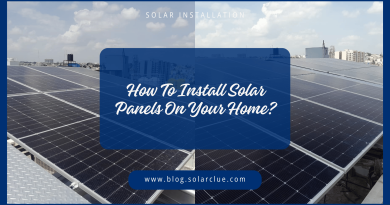What Size Charge Controller For 300w Solar Panel?
A charge controller is a crucial component in any solar power system, regulating the voltage and current flowing from the solar panels to the batteries. Selecting the appropriate charge controller for a 300W solar panel system involves understanding key factors such as panel voltage, amperage, and battery type. This guide provides detailed information on how to choose the right charge controller, including a comparison of MPPT and PWM controllers, calculations for determining the correct size, and tips for optimizing performance.
Table of Contents
- 1 Understanding Charge Controller Basics and Functions
- 1.1 Key Functions:
- 1.2 Calculating Charge Controller Size Based on Solar Panel Specifications
- 1.3 The Role of Battery Type and Voltage in Charge Controller Selection
- 1.4 MPPT vs. PWM Charge Controllers: A Comparison
- 1.5 Additional Features to Consider in a Charge Controller
- 1.6 Installing and Configuring the Charge Controller
- 1.7 Troubleshooting Common Charge Controller Issues
- 1.8 Maximizing Charge Controller Efficiency for Optimal Performance
- 1.9 The Impact of Charge Controller Size on System Performance and Cost
- 1.10 Future Trends in Charge Controller Technology
- 1.11 Conclusion
- 1.12 Comparison of MPPT vs. PWM Charge Controllers
- 1.13 FAQs
Understanding Charge Controller Basics and Functions
A charge controller is designed to manage the power coming from the solar panels, ensuring that the batteries are charged safely and efficiently. It prevents overcharging and protects the battery from deep discharge, which can significantly extend battery life.
Key Functions:
- Regulates Voltage: Ensures the voltage from the panels does not exceed the battery’s capacity.
- Manages Current: Controls the amount of current flowing to the battery to prevent damage.
- Prevents Overcharging: Stops the charging process when the battery is full.
- Protects Against Reverse Current: Prevents current from flowing back into the panels at night.
Calculating Charge Controller Size Based on Solar Panel Specifications
To select the appropriate charge controller, you need to calculate the current and voltage requirements based on your solar panel specifications.
Example Calculation for a 300W Solar Panel System:
- Panel Voltage (Vmp): 18V (typical for a 12V system)
- Panel Current (Imp): 16.67A (300W / 18V)
- Charge Controller Size: Add a safety margin of 25% to the current.
Required Current Capacity=16.67A×1.25=20.83A
For this system, a 30A charge controller would be appropriate, providing sufficient capacity to handle the current with a safety margin.
The Role of Battery Type and Voltage in Charge Controller Selection
The type and voltage of the battery in your solar power system also influence the choice of charge controller.
| Battery Type | Typical Voltage | Charge Controller Consideration |
|---|---|---|
| Lead-Acid (Flooded) | 12V, 24V | Requires precise voltage regulation to prevent overcharging. |
| AGM/Gel | 12V, 24V | Sensitive to overcharging, requiring careful selection of voltage settings. |
| Lithium-Ion | 12V, 24V, 48V | Needs a charge controller with specific settings for lithium batteries, including low voltage cutoffs. |
MPPT vs. PWM Charge Controllers: A Comparison
Charge controllers come in two main types: MPPT (Maximum Power Point Tracking) and PWM (Pulse Width Modulation). Understanding the differences between these types is essential for selecting the right controller for your system.
| Feature | MPPT (Maximum Power Point Tracking) | PWM (Pulse Width Modulation) |
|---|---|---|
| Efficiency | Up to 30% more efficient than PWM, especially in colder climates. | Less efficient, best for small systems in optimal conditions. |
| Cost | More expensive due to advanced technology. | More affordable and simpler technology. |
| System Suitability | Ideal for larger systems with varying voltages. | Suitable for smaller, simpler systems with consistent sunlight. |
Additional Features to Consider in a Charge Controller
When selecting a charge controller, consider additional features that can enhance performance and protect your system.
| Feature | Benefit |
|---|---|
| LCD Display | Provides real-time information on system performance. |
| Temperature Compensation | Adjusts charging based on battery temperature, extending battery life. |
| Load Control | Allows the controller to manage DC loads directly, offering greater system control. |
| Remote Monitoring | Enables remote monitoring and control of the system, which is useful for off-grid setups. |
Installing and Configuring the Charge Controller
Proper installation and configuration of the charge controller are crucial for ensuring optimal performance and longevity of your solar power system.
Installation Steps:
- Connect the Battery First: Always connect the charge controller to the battery before connecting the solar panels.
- Connect Solar Panels: After the battery connection, connect the solar panels to the charge controller.
- Configure Settings: Adjust settings according to your battery type and voltage. This may include setting the charge voltage, float voltage, and low voltage cutoffs.
Troubleshooting Common Charge Controller Issues
Even with the correct charge controller, issues can arise. Knowing how to troubleshoot common problems can save time and prevent damage to your system.
| Issue | Potential Cause | Solution |
|---|---|---|
| No Power Output | Loose connections or blown fuse. | Check all connections and replace any blown fuses. |
| Overcharging Battery | Incorrect voltage settings. | Verify and adjust the charge controller settings. |
| Controller Overheating | Insufficient ventilation. | Ensure the controller is installed in a well-ventilated area. |
Maximizing Charge Controller Efficiency for Optimal Performance
To get the most out of your charge controller, focus on optimizing its efficiency.
Tips for Optimization:
- Use MPPT Controllers in Variable Sunlight: If your location experiences fluctuating sunlight conditions, an MPPT controller will optimize power conversion.
- Regular Maintenance: Periodically check and clean connections to ensure efficient operation.
- Proper Sizing: Always use a charge controller that is adequately sized for your system to avoid inefficiencies and potential damage.
The Impact of Charge Controller Size on System Performance and Cost
The size of your charge controller directly impacts both system performance and overall cost. An undersized controller can lead to inefficiencies and potential damage, while an oversized controller may unnecessarily increase costs.
| Controller Size | Impact |
|---|---|
| Undersized | May lead to overheating and reduced efficiency. |
| Properly Sized | Ensures optimal performance and longevity. |
| Oversized | May increase costs without significant performance benefits. |
Future Trends in Charge Controller Technology
As solar technology continues to evolve, so do charge controllers. Future trends may include greater integration with smart home systems, enhanced efficiency, and improved remote monitoring capabilities.
| Trend | Potential Impact |
|---|---|
| Integration with IoT | Real-time monitoring and control from anywhere. |
| Higher Efficiency Models | Improved energy conversion rates, especially in MPPT controllers. |
| AI-Based Controllers | Automated optimization of charging based on real-time data. |
Conclusion
Selecting the appropriate charge controller for your 300W solar panel system involves understanding key factors such as panel specifications, battery type, and system requirements. Whether you choose an MPPT or PWM controller, proper sizing and configuration are crucial for maximizing system performance and extending battery life. By considering additional features and future trends, you can ensure that your solar power system is both efficient and cost-effective.
Here at SolarClue®, we offer a smart, practical, and “beautiful” solution. You will be answered for all the questions related to Solar.
We provide all kinds of brands that are the Best Solar panels in India.
If you are the one who is planning for the solar power system. Don’t hesitate to contact our team!
Looking forward to empowering you with solar energy, just like hundreds of our other clients!
Comparison of MPPT vs. PWM Charge Controllers
| Feature | MPPT | PWM |
|---|---|---|
| Efficiency | Up to 30% higher, ideal for larger systems | Lower efficiency, suitable for small/simple systems |
| Cost | Higher due to advanced technology | Lower, more affordable |
| Best for | Systems with varying voltage and larger arrays | Small systems in consistent sunlight conditions |
| Technology | Tracks maximum power point for optimal output | Simple on-off modulation of current flow |
FAQs
1. What size charge controller do I need for a 300W solar panel?
For a 300W panel with a typical voltage of 18V, you would need a charge controller with a capacity of at least 20A, but a 30A controller is recommended for added safety.
2. What is the difference between MPPT and PWM charge controllers?
MPPT controllers are more efficient and can extract more power in varying sunlight conditions, while PWM controllers are simpler and less expensive but less efficient.
3. How does battery type affect charge controller selection?
Different battery types (e.g., lead-acid, lithium-ion) require specific voltage settings and charge profiles, which must be supported by the charge controller.
4. Can I use an MPPT controller with any solar panel?
Yes, MPPT controllers can be used with any solar panel, but they are particularly beneficial for systems with higher voltages or where sunlight conditions vary.
5. What happens if my charge controller is too small for my system?
An undersized charge controller may overheat, become less efficient, or fail, potentially leading to damage to the batteries or other components.


